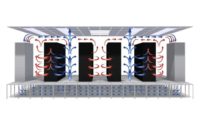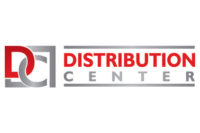The North American HVACR distribution market may be a multi-billion-dollar-a-year industry, but profit margins can be slim, and to avoid investing in excess inventory, competition for shelf space is fierce. As the gatekeepers between manufacturers and contractors, distributors are tasked with deciding which new products deserve a place on the shelf and which ones may not appeal to their customers.
That can be a difficult job, as distributors must sort through a variety of products that come to their attention through customers, employees, or vendors. Each product must be evaluated individually, taking into consideration a number of factors, including price, sales potential, and value to the customer, before a decision can be made as to whether it makes sense to stock it.
DECISION-MAKING PROCESS
Given all the complexities involved in deciding whether to add a product to inventory, many distributors have created committees that weigh the pros and cons. “Our new products committee is a cross-functional team of people from across our company,” said Mark Bray, director of supply chain, ACR Supply Co. “This team meets quarterly to systematically evaluate and plan new item introductions into the ACR inventory offering. This process includes input from our suppliers, contractor partners, and ACR team members.”
Some of the factors taken into consideration by the new products committee include price/value combination, acceptability to market segmentation objectives, history with ACR, market analysis and competition, cost investment sales analysis, sales potential versus return on investment, and educational requirements for training.
“The final decision to carry a product could be made for a variety of reasons,” said Bray. “Perhaps the product would work well in a market segment that we’re trying to grow, or it could be a request from a customer. Often, it comes down to our projected ability to generate repeated sales, while earning a return on our investment that helps us decide whether or not to carry an item.”
Meier Supply Co. Inc. also utilizes a new product committee to review items based on market potential, supplier support, feedback from other current distributors, and how the product is currently distributed. “The committee consists of our purchasing manager, sales manager, and our business development manager,” said Michael Meier, vice president and COO, Meier Supply. “We like to stay on top of new products and cutting-edge technology, as it creates a competitive advantage when we are first to the market with a solution or innovative new product for our industry.”
A committee also evaluates new products at Gustave A. Larson Co., and members include everyone from the CEO and president to the vice president of supply chain, marketing director, and all five general managers.
“Equipment lines are typically added when we acquire a new territory or upgrade product lines,” said Scott Larson, president and COO, Gustave A. Larson. “All other new products are addressed monthly through the product review committee.”
When evaluating a new product, Larson said the committee will only decide to carry the item if it meets the following two requirements:
1. Is it a top tier brand in its segment?
2. Will the product attain an acceptable gross margin return on investment (GMROI) in the first three years it’s carried. (As part of the vetting process, branch sales staff and customers are surveyed before estimating the GMROI.)
Given these requirements, the Gustave A. Larson Co. may not always be the first to market with a new product, and that is fine with Larson. “We prefer to have a proven track record of high quality and reliability with our products.”
The new product evaluation process at Geary Pacific Supply usually consists of meetings with various product managers and corporate team members. “But, there is really no set schedule for adding new products,” said Russ Geary, regional vice president, Geary Pacific Supply. “We evaluate products and services as they present themselves to us. I liken it to more of a screened open-door policy, which allows us to determine if a new item is going to bring value not only to our customers, but to the company, as well.”
Whether Geary Pacific decides to carry a product often comes down to the commitment offered by its vendors. “I believe we have a good track record with new products that we bring into the company, whether that be replacement motors and parts, or a thermostat offering,” said Geary. “We also have an enthusiastic sales team that we support, and if the vendors support the team, as well, we all prosper.”
ROLLOUT AND TRACKING
Once a distributor decides to carry a new product, negotiations with the vendor begin in earnest. “We discuss terms and conditions, guaranteed buybacks, inventory levels, and support from vendor representatives at the branch level, plus a detailed marketing plan,” said Meier. “We want to be prepared as much as possible for a successful launch of the new product, which means a documented plan is a must.”
That marketing plan starts with employee training about all the technical aspects of the products, said Meier. “Our employee training consists of the product benefits to our customers, webinars, branch visits by our product specialists, and then key customer visits. Then, we talk about which customers can help us achieve the biggest return on our time by promoting this new product.”
A detailed marketing plan outlines the rollout of the new product to the branches and customers,” Larson said. “This rollout will include introductory and promotional flyers, email marketing campaigns, social media awareness, employee/customer training, and branch visual merchandising.”
Products are tracked monthly by their GMROI, noted Larson, and, if the products are not tracking at an acceptable level, the marketing plan is adjusted. “We give the product nine months (taking into account seasonality) to move into an acceptable GMROI range. If the product doesn’t pan out after nine months, we look to return or rebalance the product per our product agreement with the vendor.”
Deciding on the amount of product to carry is another big decision, which is why the procurement team at ACR Supply works closely with the business unit leaders and account representatives to decide appropriate stocking levels for each individual market. “In some instances, we’ll beta test a new product in one or two markets before we launch it companywide,” said Bray. “We’ll look at sales history, gross profit dollars, and expectations from ourselves and our suppliers when determining if a new product is successful. On average, 12 months is a good window to see if a product can prove its sustainability in our markets.”
Freight costs and warehouse space also play a role in determining how much product to carry, said Geary. “Those factors, as well as several others, may come into play when deciding how much and where we decide to carry a new product. For example, general interest from each individual branch can be a factor — is it financially responsible to carry that product? Is it a seasonal product? Is it a specific market-driven product? Is it competitively priced? Is there enthusiasm amongst our branches as well as our
customers?”
In the end, distributors hope their careful evaluation of new products will lead to more successes than failures. Their preference is for products to fly off the shelf, leaving nothing to accumulate dust.
Publication date: 8/17/2015
Want more HVAC industry news and information? Join The NEWS on Facebook, Twitter, and LinkedIn today!








Report Abusive Comment